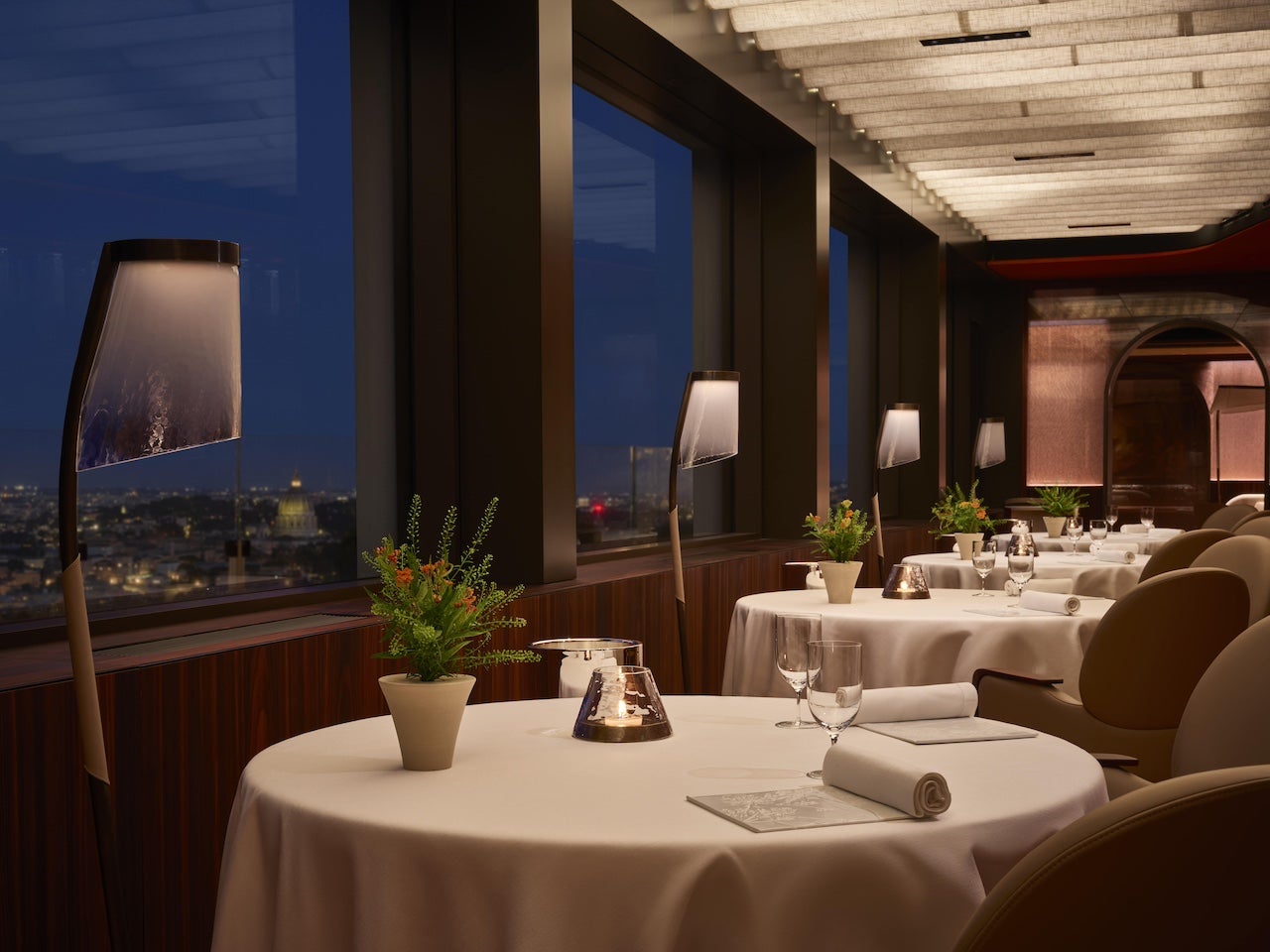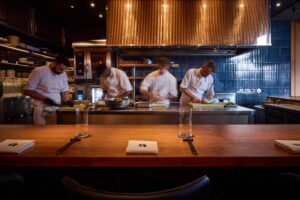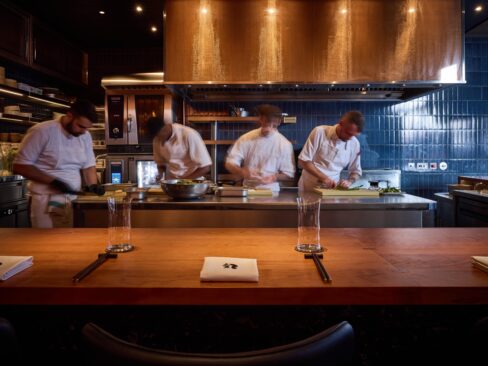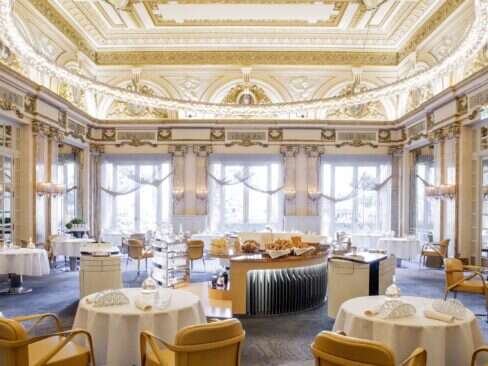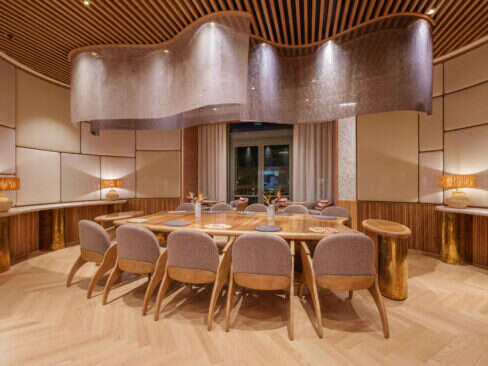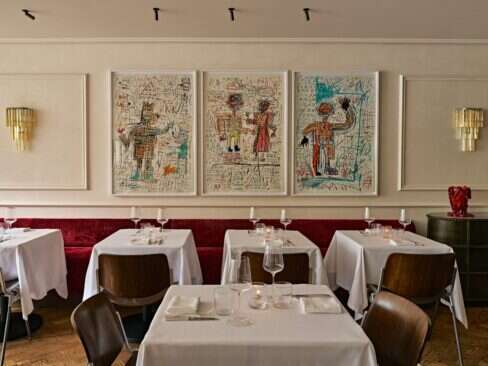It seems that 1963 was a busy year for Conrad Hilton. In a time when most 76-year-olds were long since retired, this force of corporate nature was as busy as ever, dotting the world with his ultra-modern reinterpretation of the Grand Hotel. That year alone, Hilton opened hotels in London, Rome, Athens, Tehran, Rotterdam, Hong Kong, Tokyo, New York, and Portland, Oregon.
In Rome, the Stetson-wearing, rabid anti-communist, with his down-home habit of exclaiming “by golly!” whenever excited about anything, was blocked by communists on Rome’s city council for almost three years before being allowed to build on top of Monte Mario, the city’s highest hill. The resultant 400-room behemoth sitting in a 15-acre park, the Rome Cavalieri Hilton (now Waldorf Astoria), so redolent of its era it was accorded its own cameo in Mad Men, imbibes absolutely breathtaking views as it presides over the Eternal City.
In 1994, the German-born general manager of the Cavalieri, Hans Fritz, conceived plans for a new destination dining venue for the top floor. Reaching out to an old acquaintance, Heinz Winkler, the then youngest ever recipient, in 1982, of three Michelin stars, his request for a recommendation of a rising talent for the new restaurant was reciprocated without hesitation.
Winkler immediately proposed Heinz Beck, his young fellow Bavarian sous-chef. Beck, a non-Italian speaker, suddenly found himself in the capital of a country with a gastronomic heritage as proud as it was long, charged with unveiling the new haute cuisine showpiece: La Pergola. His initial inclination was to stay for a few years and maybe master a new language. Thirty years and a relentless ream of accolades later, Heinz Beck is still there.
[See also: La Rocca Debuts at Castelfalfi in Tuscany]
The Chef
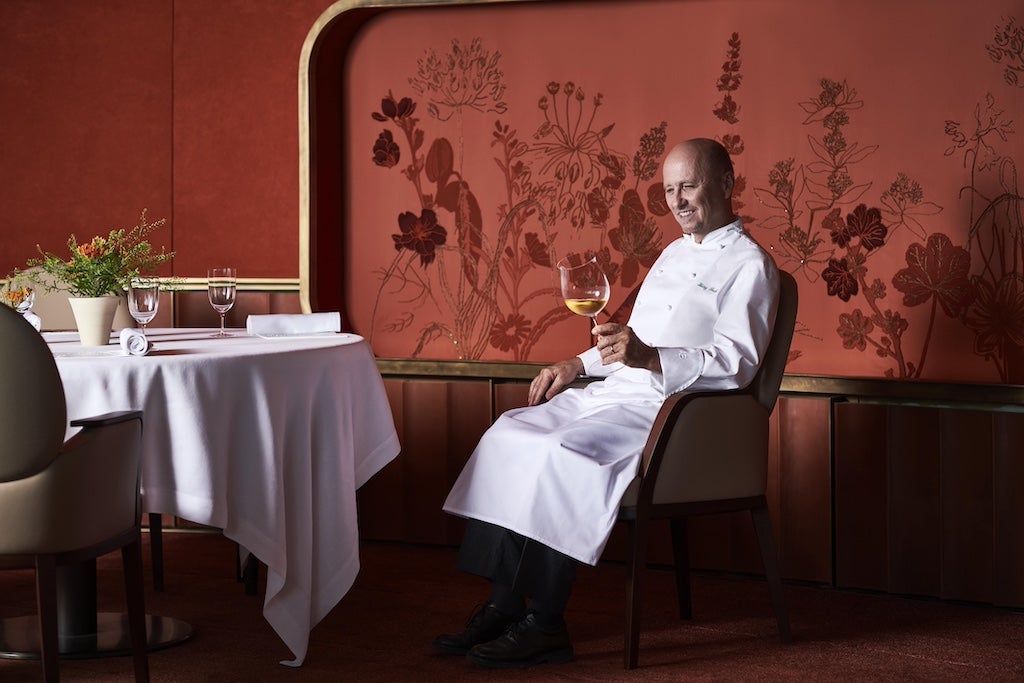
This remarkable journey sees Beck perched up in his ninth-floor eyrie, stewarding what is, since 2005, Rome’s first and only three-Michelin-starred restaurant. It’s a statistic that garners attention. Not simply because Rome might otherwise be expected to realize more than one three-starred eatery, but also because the best restaurant in the Italian capital (at least by Michelin’s metrics) is helmed by a German.
Like so many before him, Beck appears to have fallen for the seductive allure of this most mesmerizing of cultures – though falling for his now wife Teresa Maltese in 1998 no doubt plays a major part in this story. What is beyond doubt is he is now revered as one of the undisputed maestros of Italian gastronomy. While there are six additional restaurants, boasting another four Michelin stars, together with a busy consulting business, chef Beck is invariably found in the kitchens of the empire’s nerve center.
He commands an almost Caesar-like presence on the terrace of the newly remodeled La Pergola, as the last rays of a stifling sun-smothered August day are splayed spectacularly across the outstretched city. A man hovering patiently on the periphery is summoned forward, and in a well-ingrained ritual, Beck takes a small spoon of whatever culinary exquisiteness he’s holding. A prolonged silence presages a seriously delivered nod of approval as if giving the thumbs up in the Colosseum, clearly visible in the distance. There is, it seems, a very precise, very disciplined element to Beck’s Italian gastronomy.
While he’s evolved through various periods of innovation, Beck’s total immersion into the scientific underpinnings of nutrition is less well understood. As he divulges a deluge of data, from ischemic stroke to lyophilization, inflammation modulation and the molecular pathways involved in oxidative stress, it’s evident that the dive he’s taken into all this is a deep one. He collaborates regularly with academics and is often credited on research papers.
Amidst the ultrasound bath machines, rotary evaporators and high-speed centrifuges that would look more at home in a lab than a kitchen, the molecular pathways to my own brain begin buckling under the weight of scientific detail. It’s difficult to envisage any other top-flight chef delving so diligently and determinedly into the nutritional fundamentals of fine dining. But is that not simply an additional layer of luxury in an already unadulterated luxurious experience?
[See also: Ciccio Sultano’s Duomo: Sicily on a Plate]
The Menu
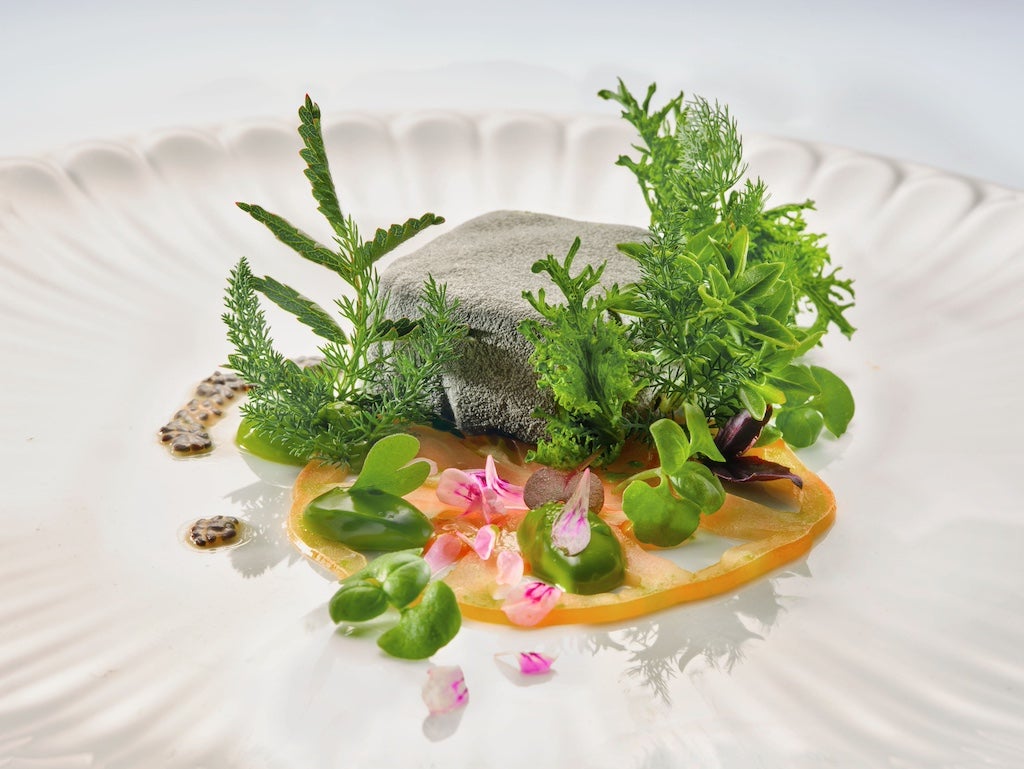
It’s with that cosseting notion tucked happily away that the tasting menu is unleashed with Dom Perignon Vintage 2015. Are there any better ways to initiate a three-starred extravaganza? Probably. But probably not too many. Should the 10-course tasting menu appear daunting, there’s a seven-course iteration, whilst the a la carte proffers a manageable four or five options under each course.
There’s no wine pairing but outstanding sommelier Marco Reitano, together with Beck since 1996, will immediately be alongside, proposing sublime suggestions from his two-storied glass-floored cellar housing 80,000 references, carved into the limestone underneath the Cavaliere. There’s even a dedicated water menu that’s more extensive than most restaurant wine lists.
Whilst undoubtedly reflective of Italy’s gastronomic traditions, the menu bears little resemblance to the trattoria-based cooking that has long since conquered the hearts and stomachs of the entire world. These are incredibly complex dishes – little offerings of perfectly framed edible artwork designed to tantalize the most refined of palates.
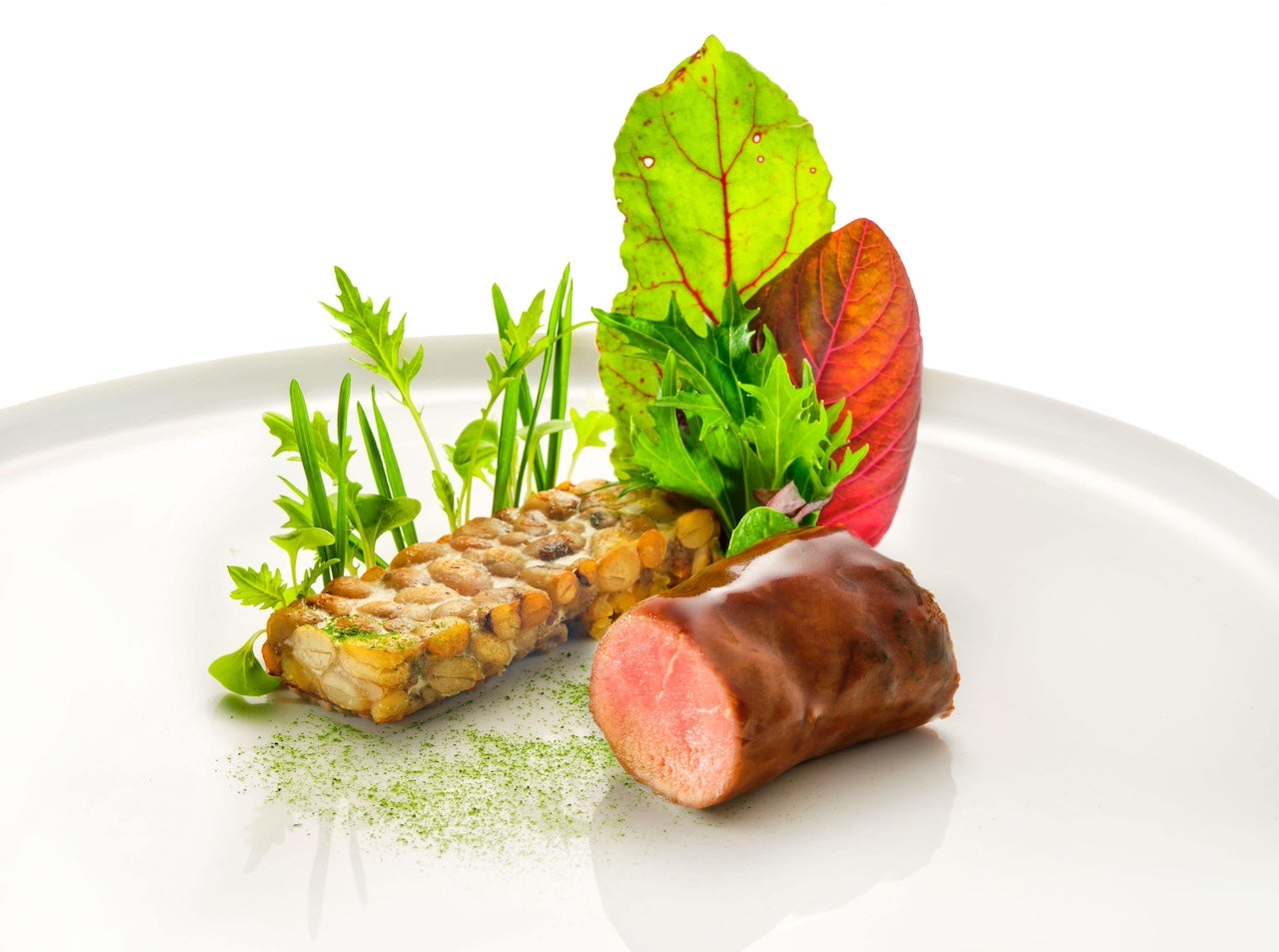
The high priest of healthy eating is, unsurprisingly, tilted towards vegetables and seafood with amberjack, scampi, lobster and turbot forming four of the eight non-dessert courses, only one of which is a meat dish – lamb on the Via Appia Antica. Cooked to perfection in a charcoal Josper oven, it’s arranged amidst seeds and vegetables to represent ancient Rome’s most famous thoroughfare. Another homage to Rome arrives in the form of a sanpietrino, the stones used to pave the Roman streets. Comprised of tomato and vegetal coal, it explodes in a burst of unforgettable flavors. Fagotelli ‘La Pergola’, Beck’s inventive riff on carbonara, is a surviving signature dish that harks back to an earlier cooking style, the sauce encased inside square-shaped fagotelli pasta. A Michelle Obama favorite, apparently.
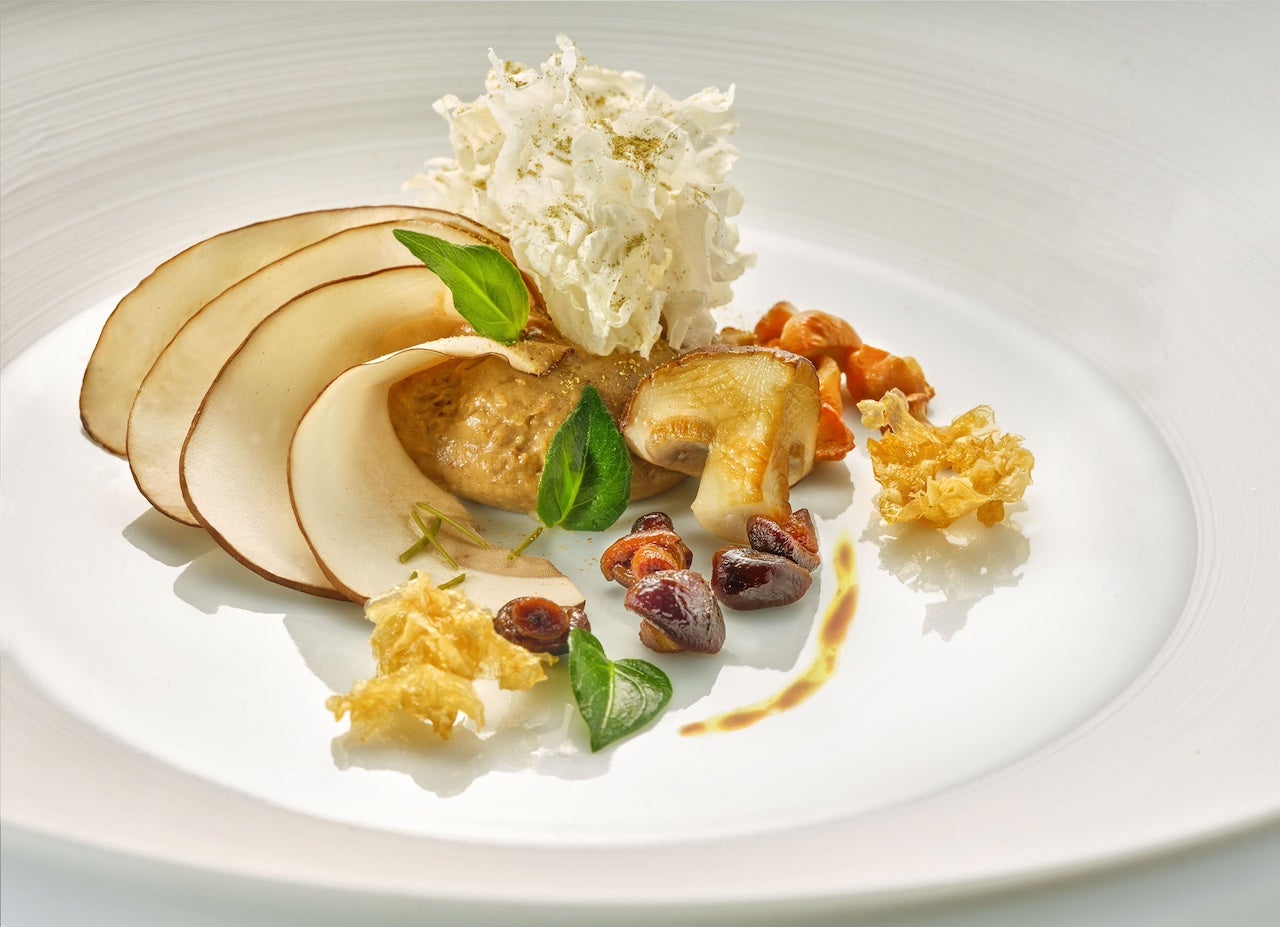
In honor of that Italian enamoration with mushrooms, where secret fungi foraging locations are often zealously guarded, La Pergola’s version of a mushroom salad doesn’t resemble anything likely found on a family dinner table. With home-made coffee vinegar, cardamom leaves, fir tree and extra virgin olive oil blended in an ultrasound tank, with a rare tremella mushroom perched like a sea coral atop a porcini mushroom puree aged in milk and cereals – this is more high art than high tea. And, of course, highly delicious.
A dessert entitled ‘Sweet Dreams’, a layer of white chocolate filled with chamomile foam on a crunchy base of basil sprouts and mini-brined tomatoes, accompanied by an infusion of cascara (powerful antioxidant), chamomile (aids sleep) and lemon verbena (aids digestion), is artfully presented on a pillow-shaped dish. Its title isn’t as innocuous as it sounds. Beck has conducted extensive research into the metabolism at a meal’s conclusion, and Sweet Dreams isn’t simply a well-intentioned wave off to bed; sweet dreams are precisely what this gastronomic journey has been carefully crafted to induce.
[See also: Romeo Napoli Welcomes Alain Ducasse]
Interiors
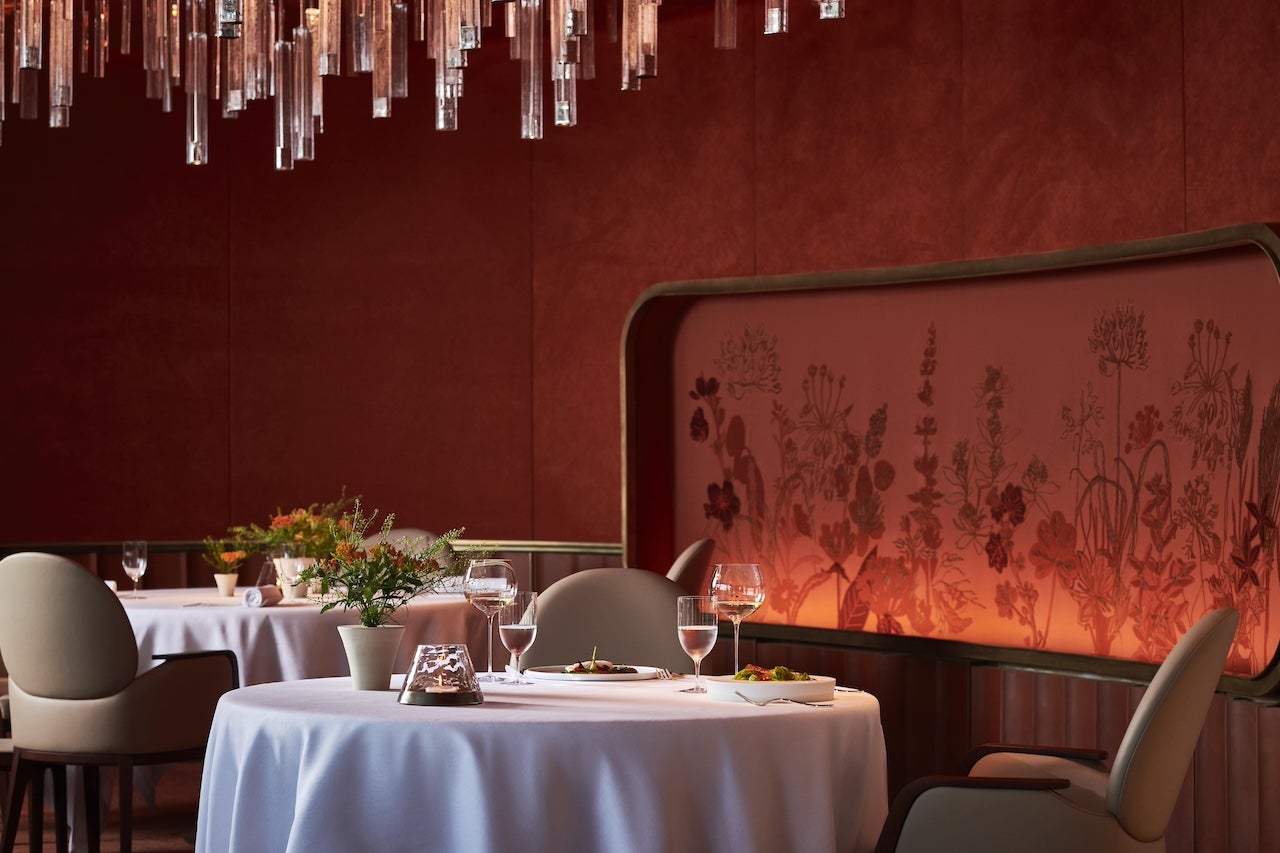
More than 1,000 pieces of predominantly 17th and 18th-century artworks from the owning family’s collection are draped across the property, including a massive Tiepolo triptych in the lobby. It tempers Hilton’s original statement of modernist intent into something altogether more traditional.
However, La Pergola, closed since fall 2023, reopened this August to reveal a stylishly reconfigured space that slots seamlessly into place alongside the unassailable vista and the exceptional cuisine, as if the final piece of the top floor’s own triptych. Paris-based design studio Jouin Manku, whose subtle synergizing of opulence with elegance in locations like La Mamounia in Marrakesh and Alain Ducasse’s three-starred restaurant inside Monaco’s Hotel de Paris, was entrusted with La Pergola’s remodeling. The result is stunning.
Principals Patrick Jouin and Sanjit Manku articulate their work as a striving for “purity and wonder”, and also aim to deliver a “coup de foudre” – essentially something that stops you in your tracks. Collaborating with some of the finest artisans in Italy and beyond, they’ve taken the essence of the city very visible right outside, and brought it inside, most notably with the terracotta of the Roman rooftops. The walls are covered in terracotta Alcantara, the synthetic leather from Umbria that is beloved by the fashion industry.
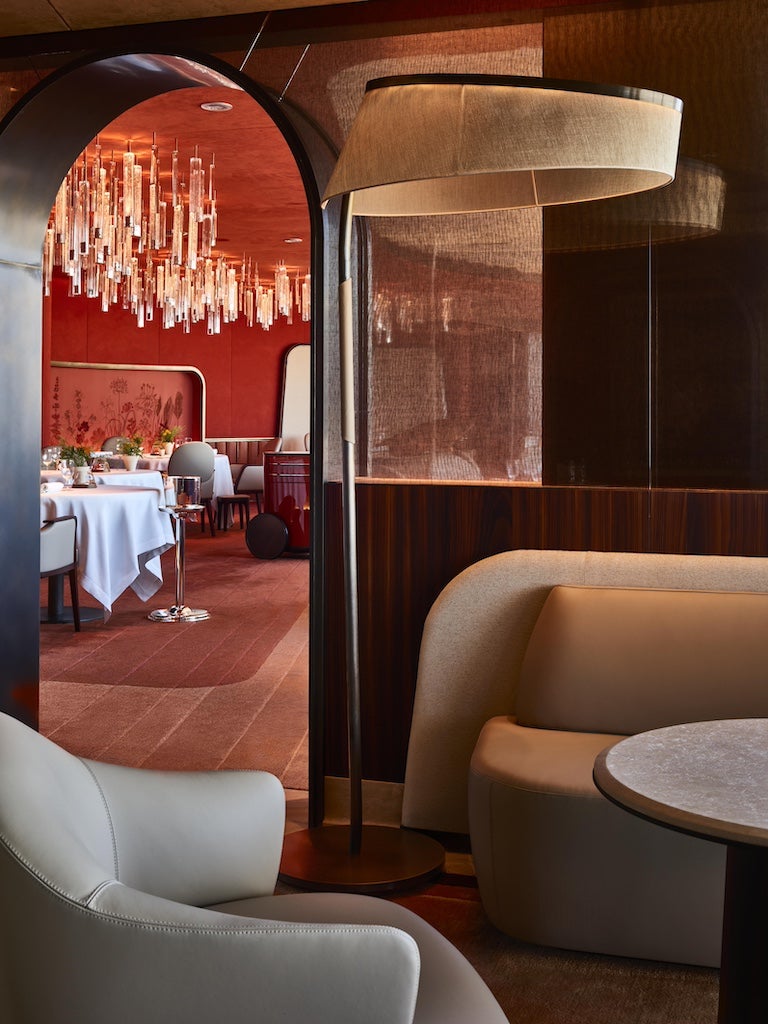
The bar is sculpted from travertine, the stone synonymous with Rome since ancient times, whilst the new glass fence around the terrace ensures every last drop of Roman red is fully absorbed. The chairs from renowned furniture craftsman Rimalcuoio are the final choice from hundreds that failed to meet Beck’s exacting standards, while an alcove embroidered with his favorite herbs and plants, was painstakingly created by Montex, one of Chanel’s Métiers D’Art, who work on every Chanel collection. A magnificent chandelier of long crystal tubes from Czech glass meisters, Hunat, dangles like a burst of Roman rain, and in the second smaller dining room, an art nouveau collection of vases is skilfully displayed.
Everything down to the minutest of details is newly designed in this gorgeously romantic reimagining of Rome’s most iconic dining destination. It’s certainly not Conrad Hilton’s uncompromising kind of contemporary, and who knows what the man with a predilection for corned beef hash would have made of Heinz Beck’s epicurean excesses, but by golly(!), La Pergola stopped me in my tracks.
[See also: Jean’s: New York’s Farm-to-table Hotspot]





